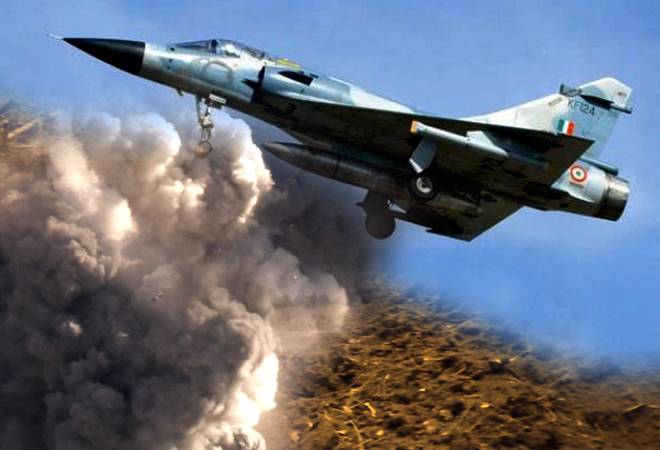Indian newspapers, news channels, social media and tabloids are abuzz with the news of the IAF strikes. There isn’t a single person who doesn’t know at least the vague details (unless you’re sleeping under a rock). Amidst all the fanfare, did we once wonder why IAF chose Balakot, what was the significance that the IAF took the risk of entering the demarcated territorial boundary of the neighbouring nation and attacked that one site, when there were plenty such in POK itself? Sure, some enlightened souls will claim because it was one of the biggest sites or that the intelligence report claimed that the brother-in-law of Masood Azhar (Jaish-e-Mohammed) was residing there. But it doesn’t stop there; Balakot has a very rich Jihadi history.
Balakot is a pilgrimage site of Jihadis. It hosts the grave of Sufi Syed Ahmad Barelvi who declared Jihad against Maharaja Ranjit Singh and offered an ultimatum of conversion or death. He was ultimately killed in the 1831 war against Sikhs. This was during the time when the sovereignty had to all intents and purposes passed into British hands.
Barelvi killed his comrade for 30 rupees and then taking that money, he went all the way from Raebareli (in UP, India) to Balakot through Balochistan and Afghanistan.
Pakistani historian Ayesha Jalal says Balakot has became a great site of veneration not only for jihadis but also for Pak nationalists.
Barelvi went all the way from Raebareli (in UP,India) to Balakot through Balochistan and Afghanistan.He urged Pashtuns to fight Sikh Kafir rule pic.twitter.com/xFns48vZAj
— True Indology (@TrueIndology) February 26, 2019
Alexander Gardner, who was then in Balakot reveals that Barelvi killed his comrade for 30 rupees. He then declared Jihad against all unbelievers. pic.twitter.com/llGf9JFNw0
— True Indology (@TrueIndology) February 26, 2019
Barelvi urged Pashtuns to fight Sikh Kafir rule. He heard reports of Ranjit Singh banning Azan and cow slaughter and declared a Jihad against all unbelievers. People were given the ultimate to either convert or face the wrath, in effect Barelvi wanted to threaten the people to follow his deluded path and if not, they had to suffer. There was no choice of peaceful existence. Curiously (though unsurprisingly), he was hosted by the Scindias.
Barelvi and his armed followers did not declare a Jihad against British.
1)British had not directly interfered in Muslim affairs
2) They were too powerfulHe heard reports of Ranjit Singh banning Azan and cow slaughter and declared a Jihad. Curiously, he was hosted by Scindias pic.twitter.com/0UZyhr5D8p
— True Indology (@TrueIndology) February 26, 2019
When Barelvi reached Balakot, he carried with him a band of 600 followers known from British records as “Hindustani fanatics”. He also had the support of thousands of Hill Pathans of Peshawar. He claimed support of kings of Afghan, ME and Turkey and called himself Khalifa. At Balakot, Syed and his band were attacked by “Fanatic Akalis” (Nihangs). They fought desperately, but all 1300 hundred of them were slain to pieces by the Sikh army. There were reports that Barelvi was carried by to ‘Paradise by angels’, but Alexander Gardner, a traveler who was within 100 meters, retells in his biography that he saw no such thing.
Barelvi died without achieving his objective, but his ‘martyrdom’ inspired thousands of Jihadi songs urging momins to engage in Jihad. Anything short of Jihad was considered “kufr” (infidelity). The strange thing to note herein is that Barelvi never declared any Jihad against the British, even though they were ones essentially holding the reins. He believed the British to be very powerful and chose to stay away. In effect, Barelvi practiced very ‘selective jihad’, the execution of which depended on the probability of the mission being successful. He probably did not want his efforts to go in vain and wanted to take on a ‘relatively weaker ruler’, after all there was the question of ‘72 virgins’.
Barelvi died without achieving his objective, but his "martyrdom" inspired thousands of Jihadi songs urging momins to engage in Jihad. Anything short of Jihad was considered "kufr"
He also inspired the 1897 Jihad in Peshwar against British (of which Saragarhi was an episode) pic.twitter.com/J76LcYsgyX
— True Indology (@TrueIndology) February 26, 2019
As is evident, Balakot has been the breeding ground of terrorism in the Indian subcontinent since the last 200 years and is the primary source of more encouragement to commit the heinous attacks. India, in its fight to eradicate terrorism just does not want to terminate the terrorists wherever they come across them. They want to strategically focus on those areas from where all this is stemming, in other words, cut it from the root so it doesn’t grow.
Balakot has at least 1200 mass graves of those who died in 1831 Jihad and now around 200-300 people have in the air strike. The Jihadi paradise is fast turning into a mass grave, an exhibition for everyone who wishes to worship such atrocities.
